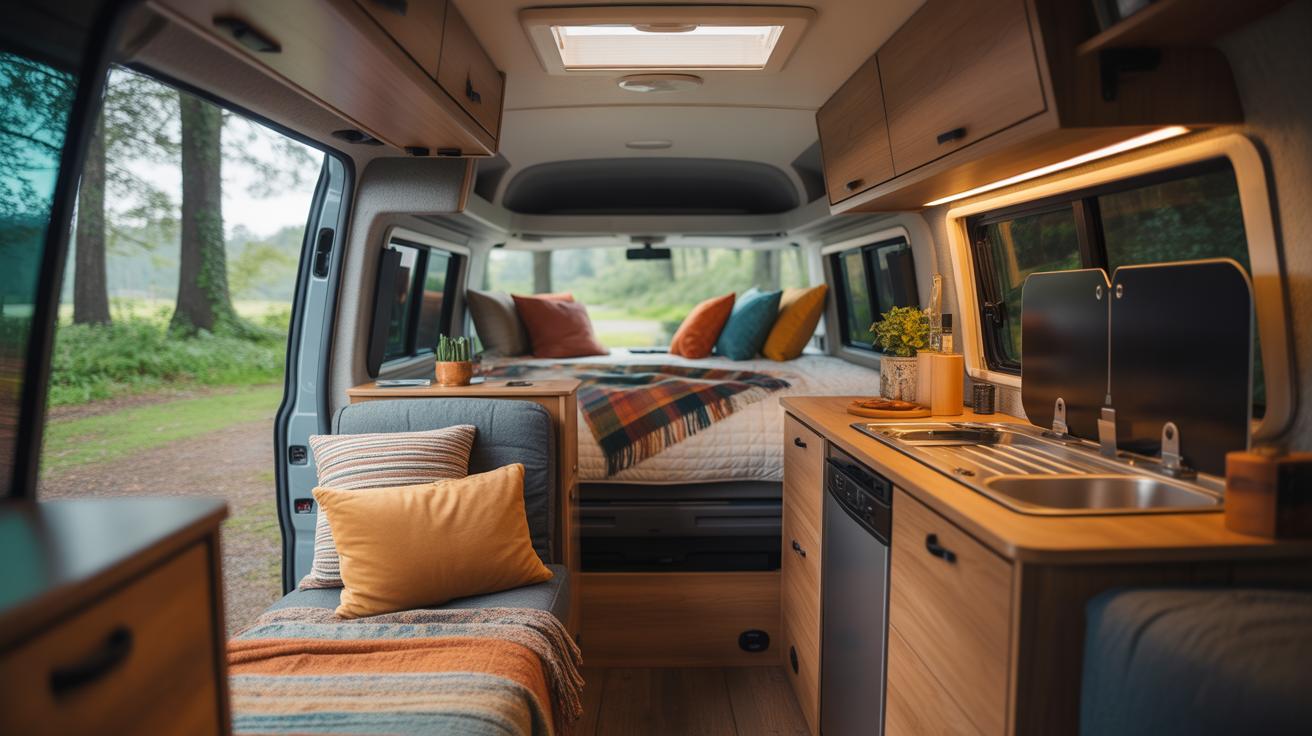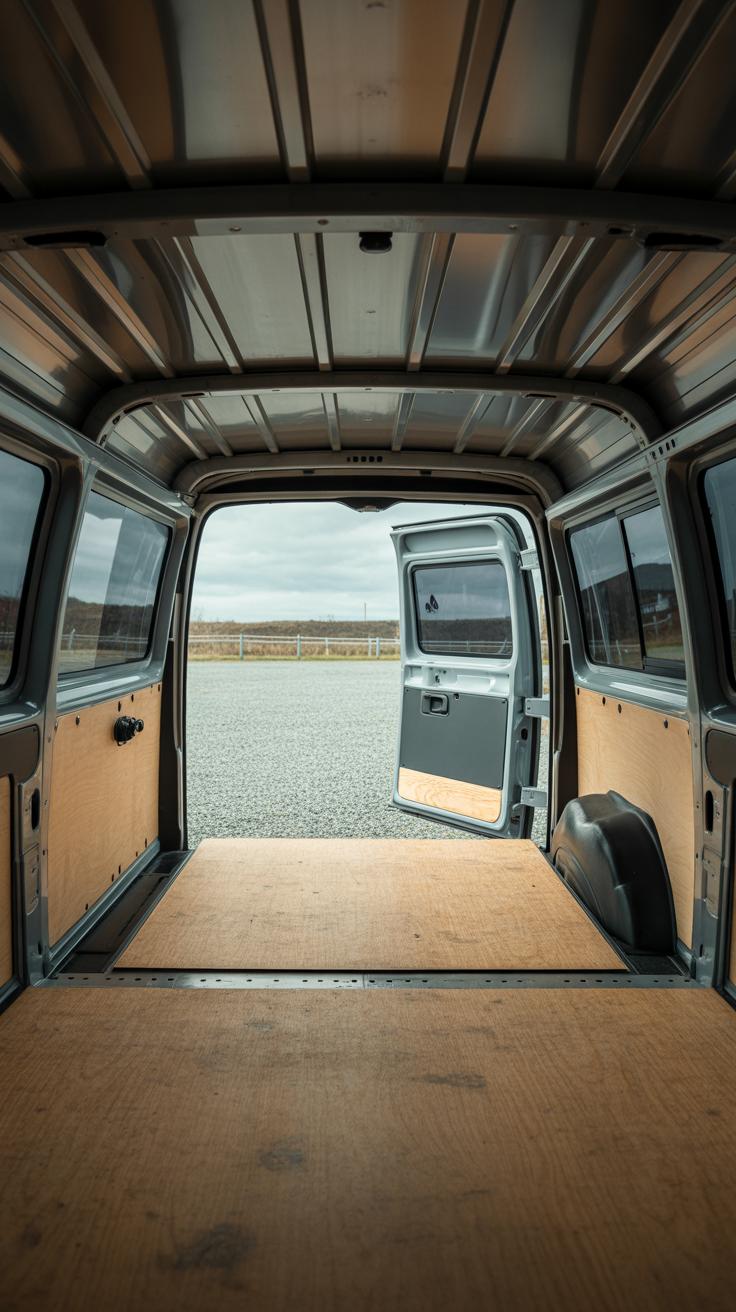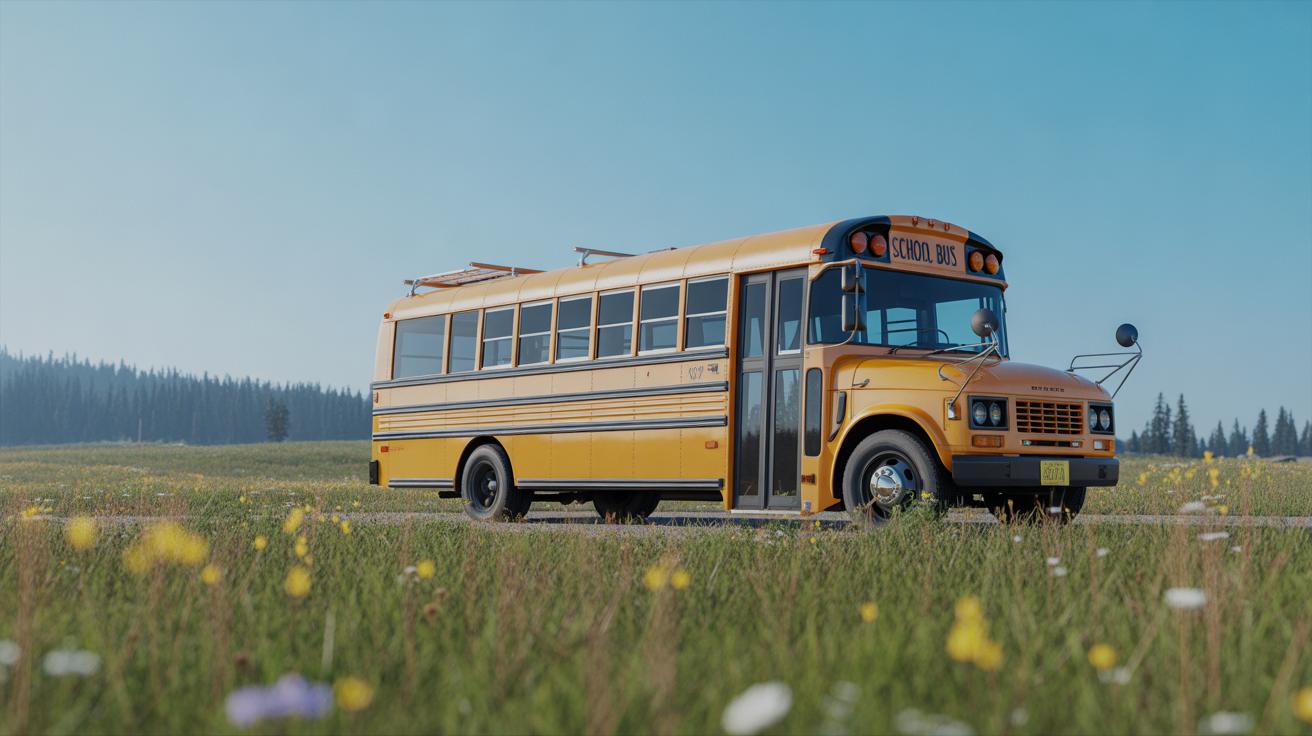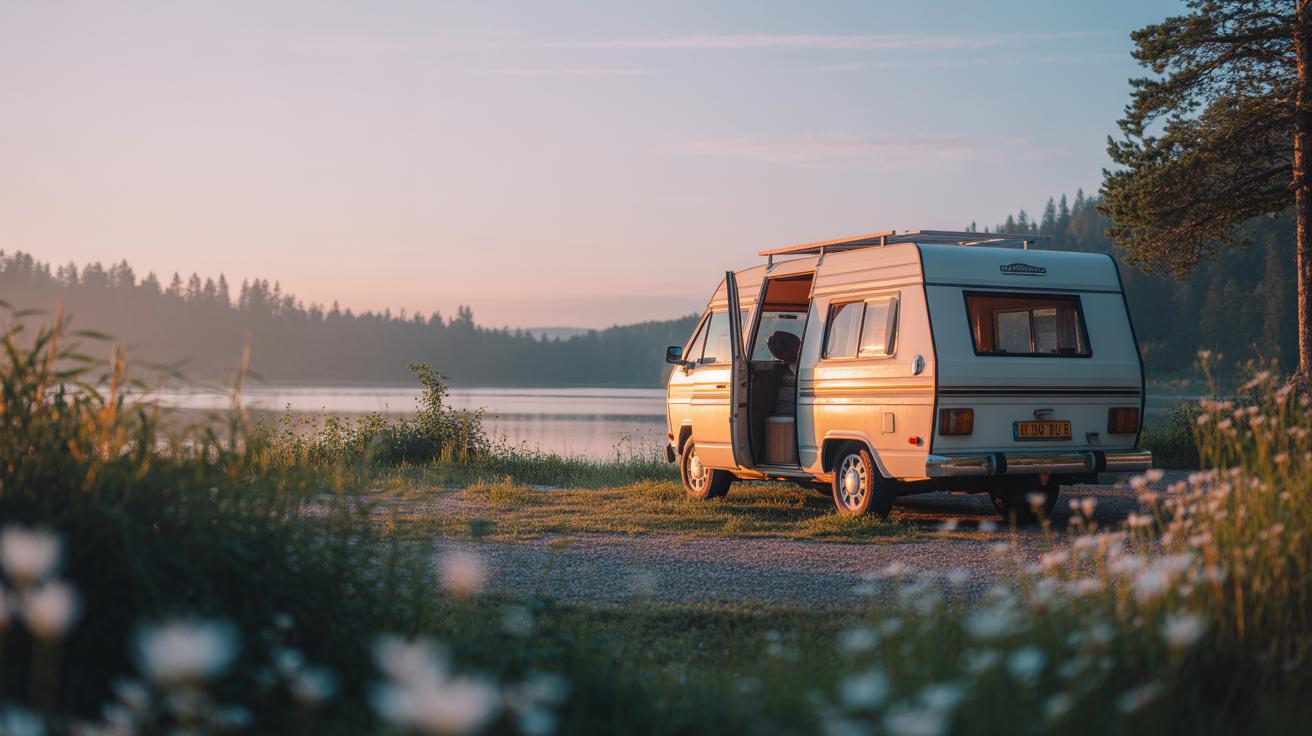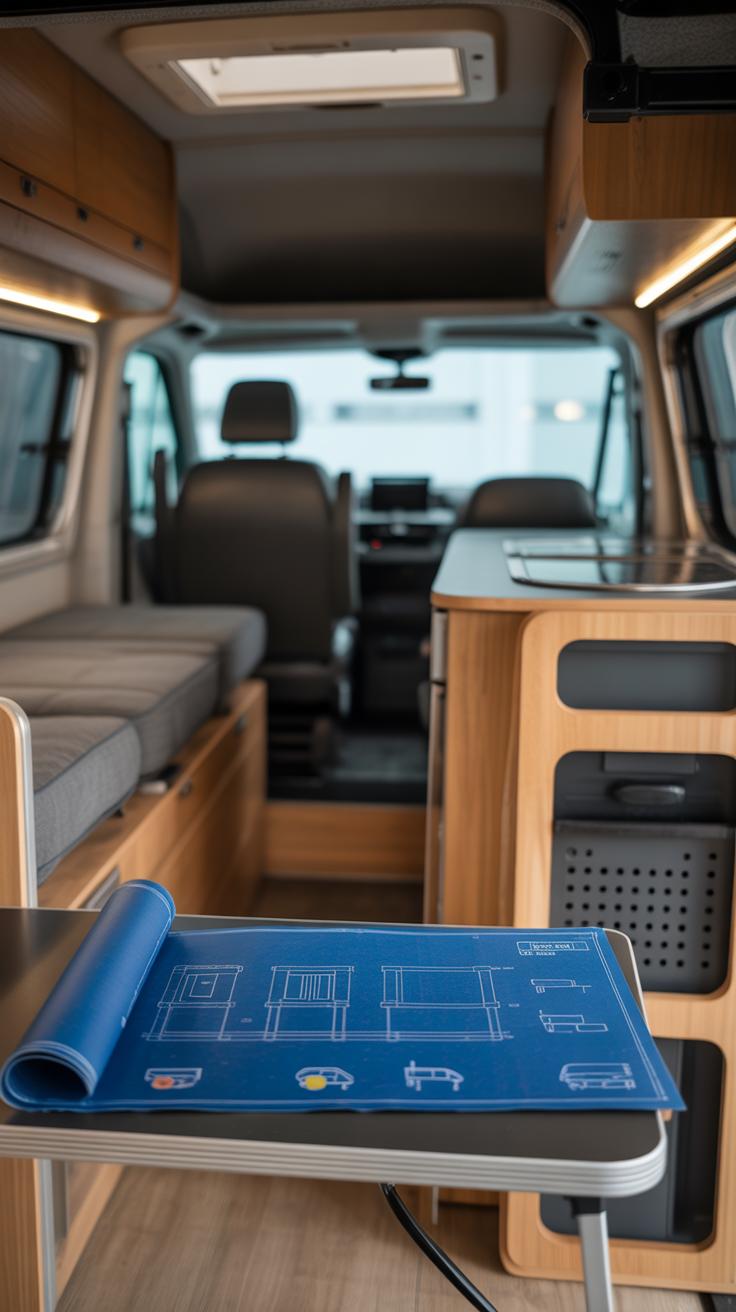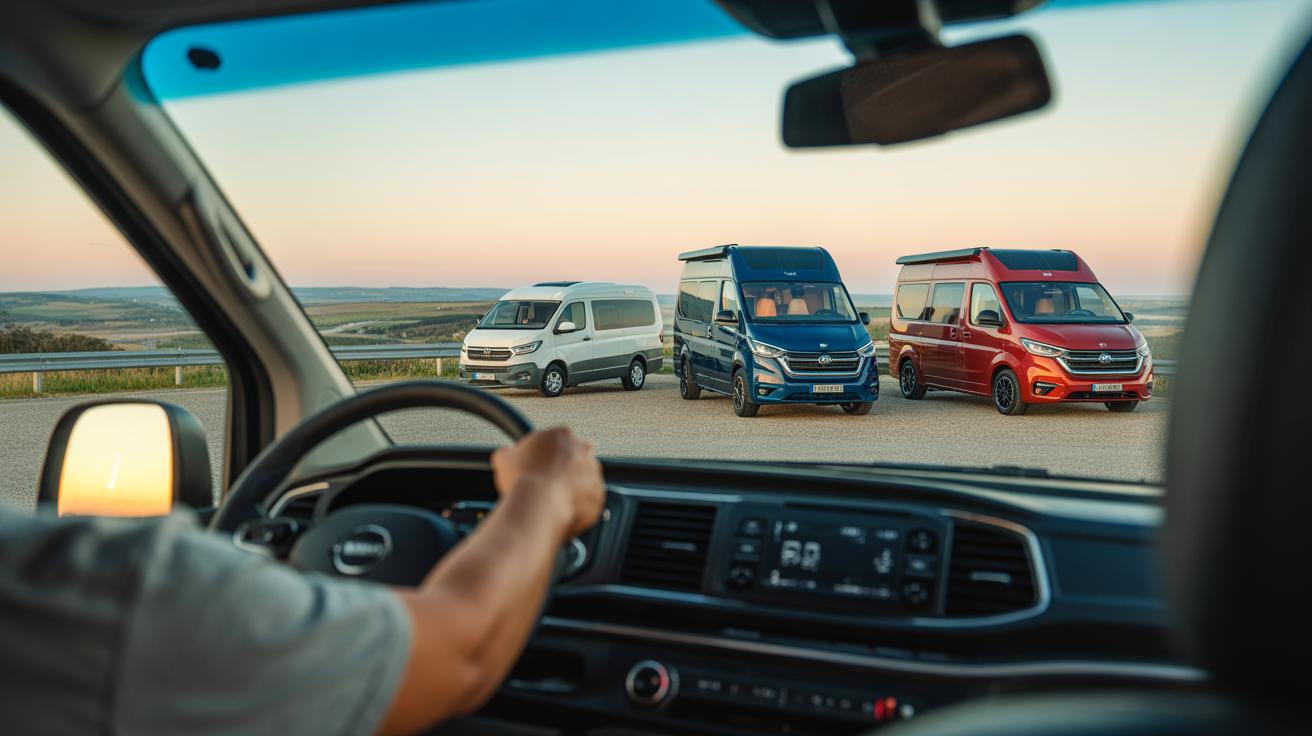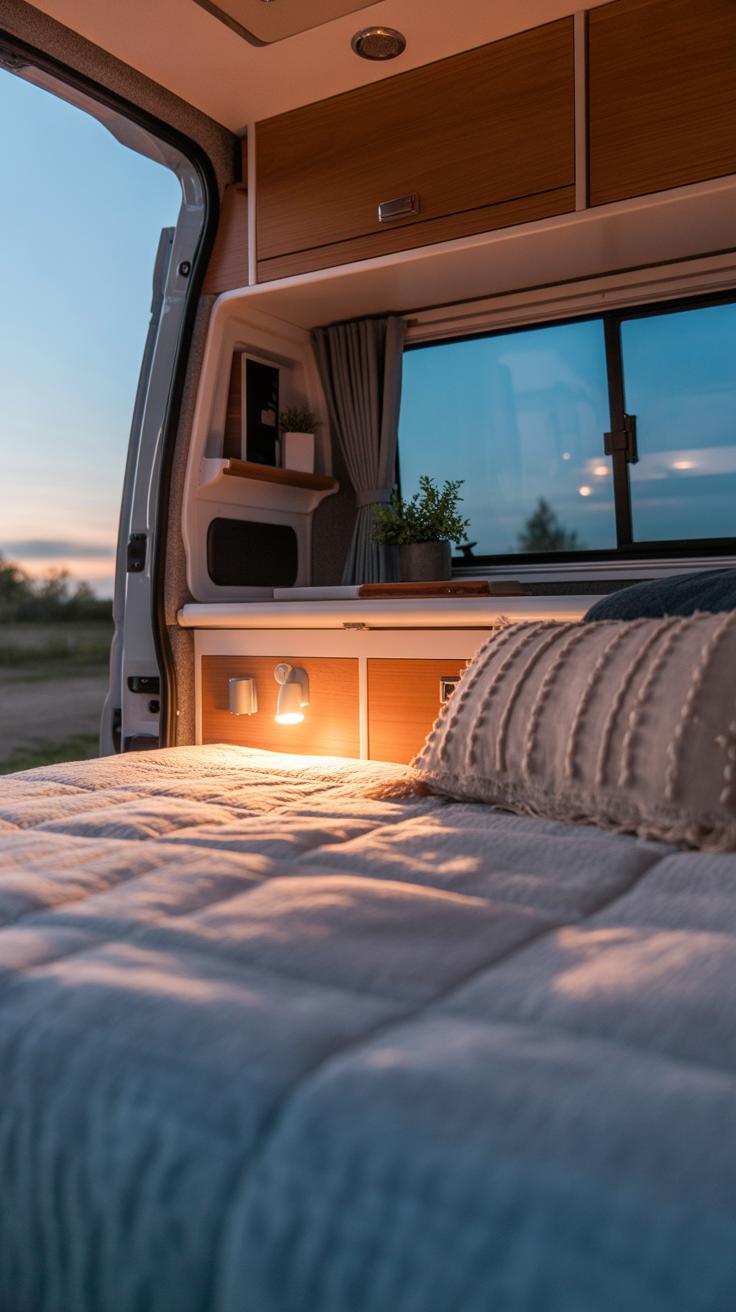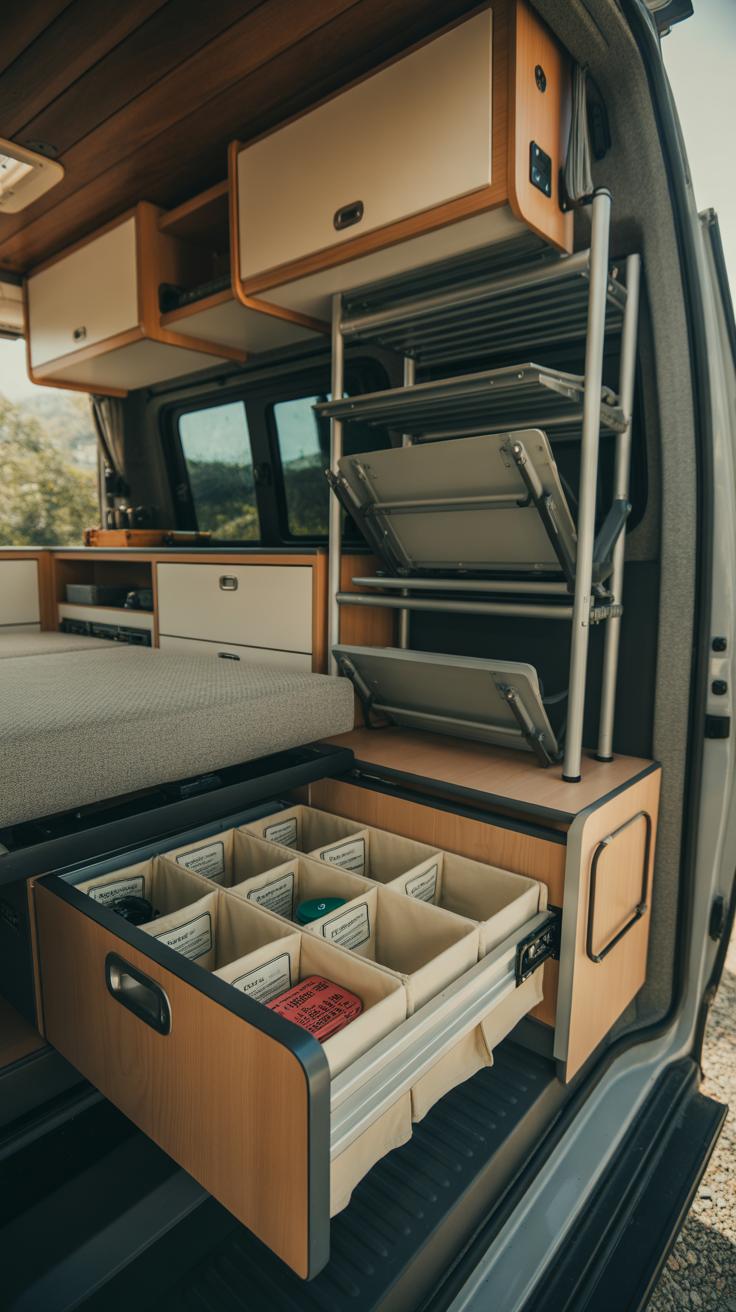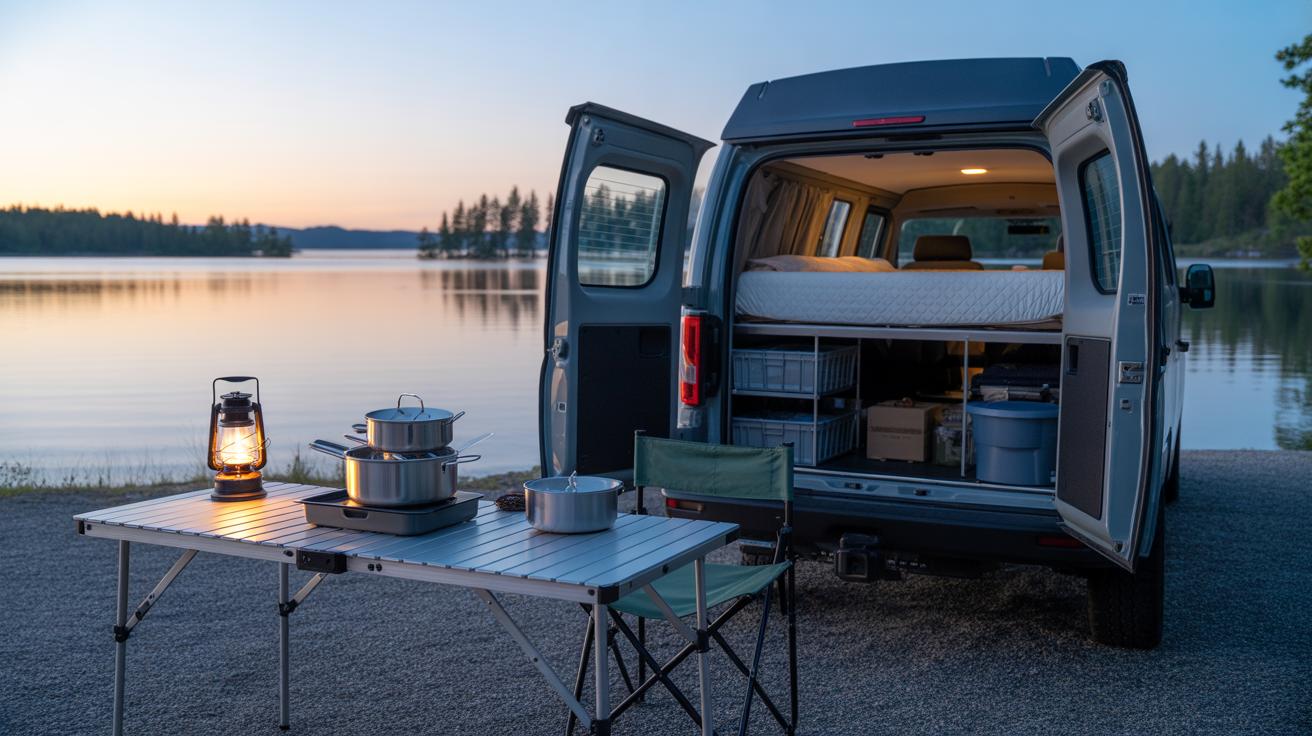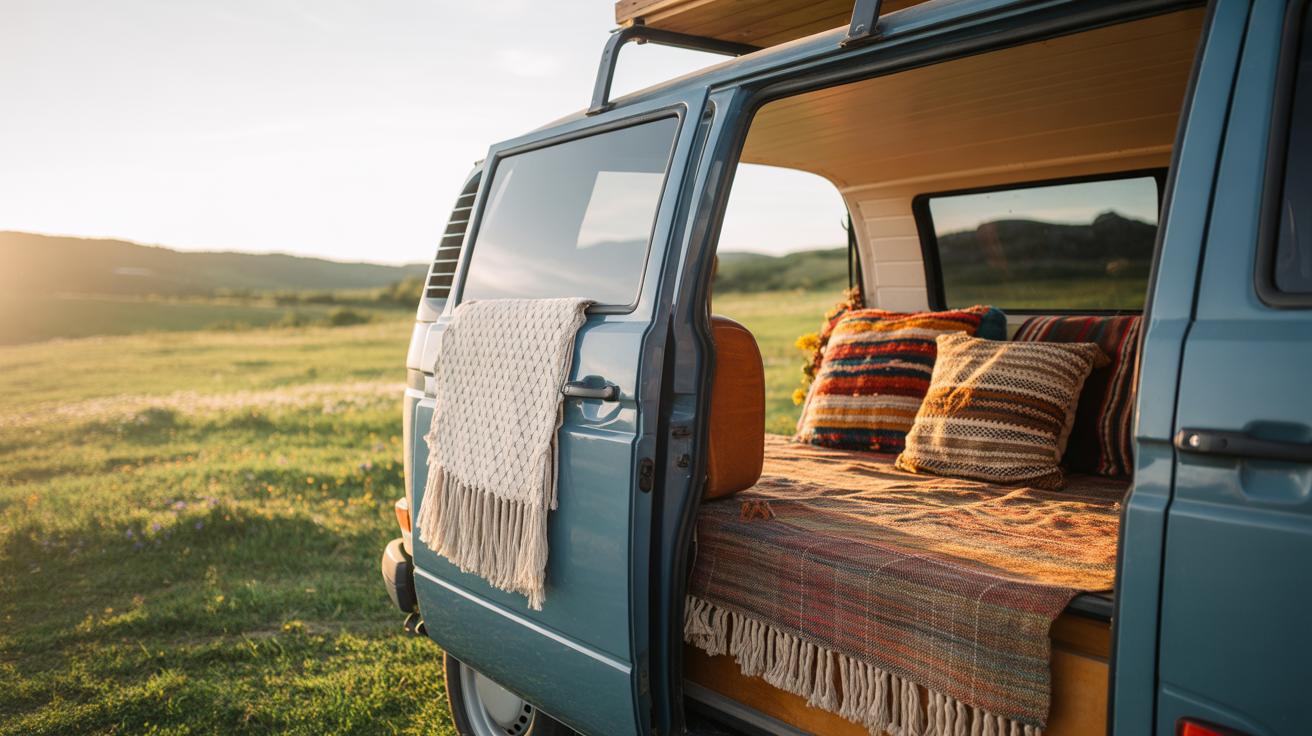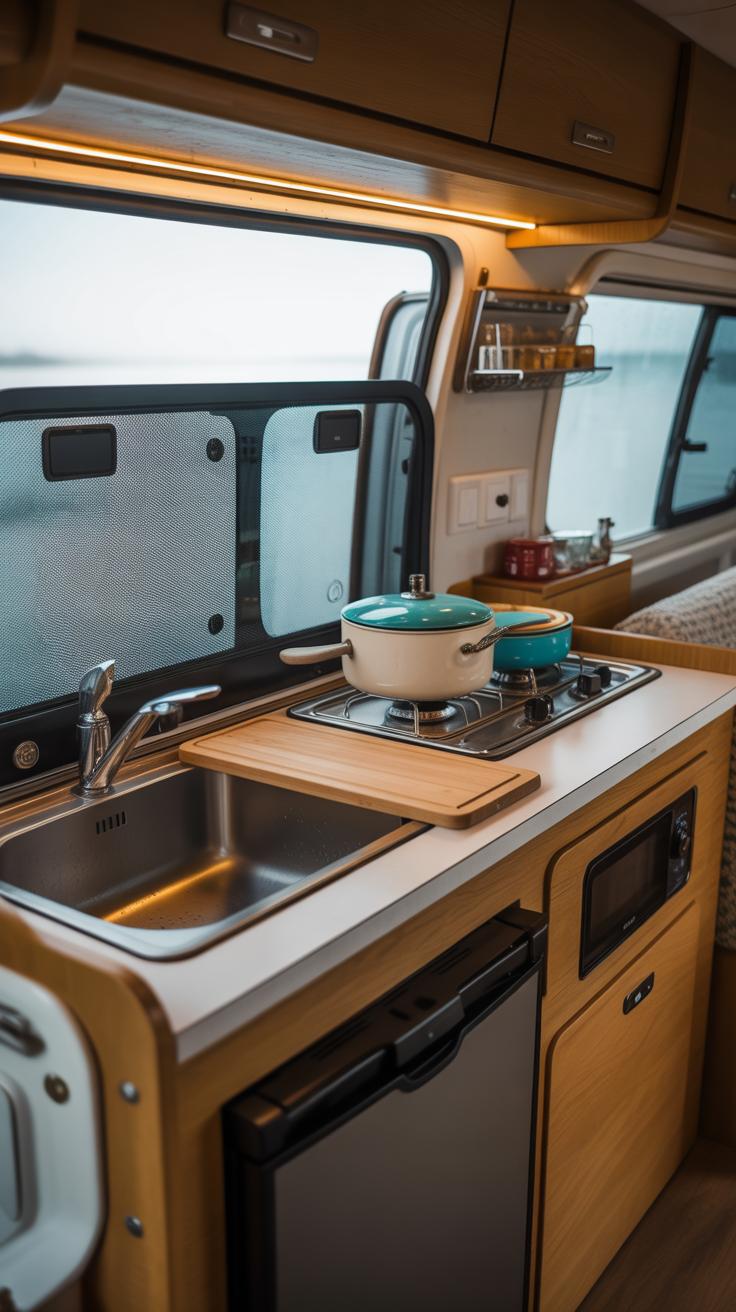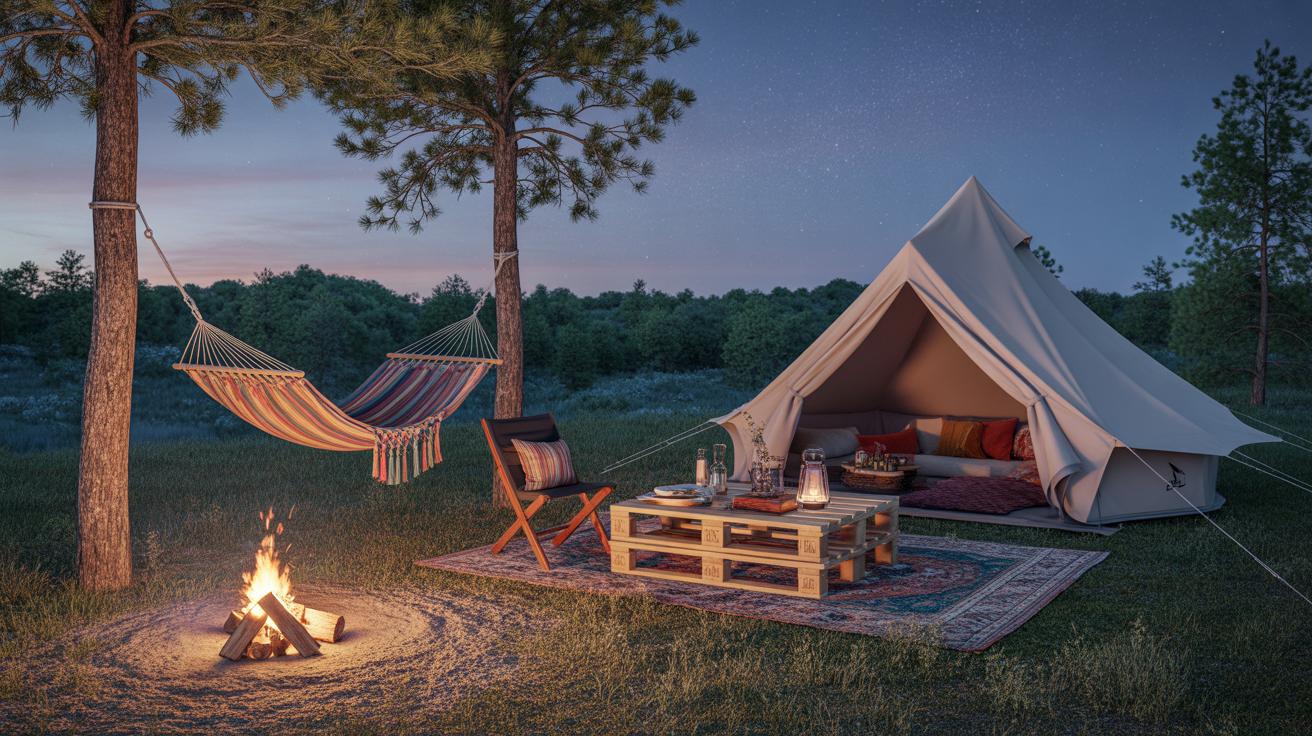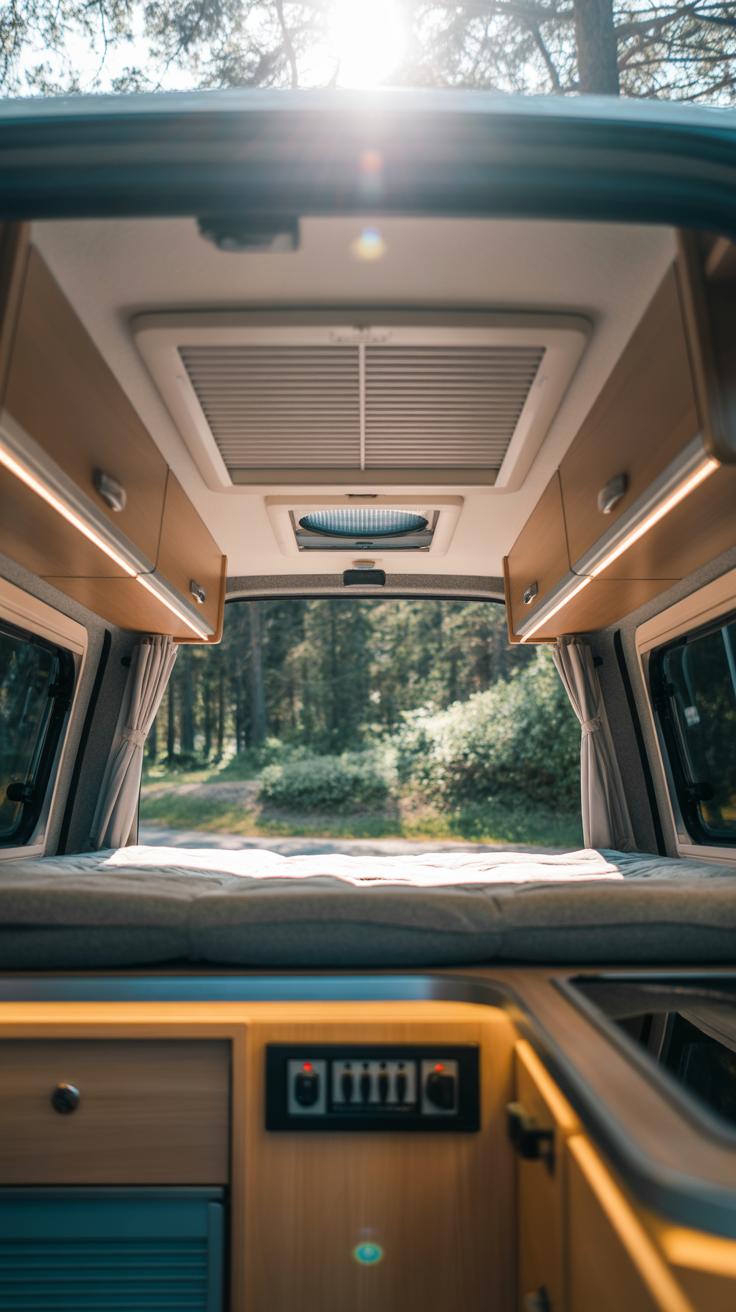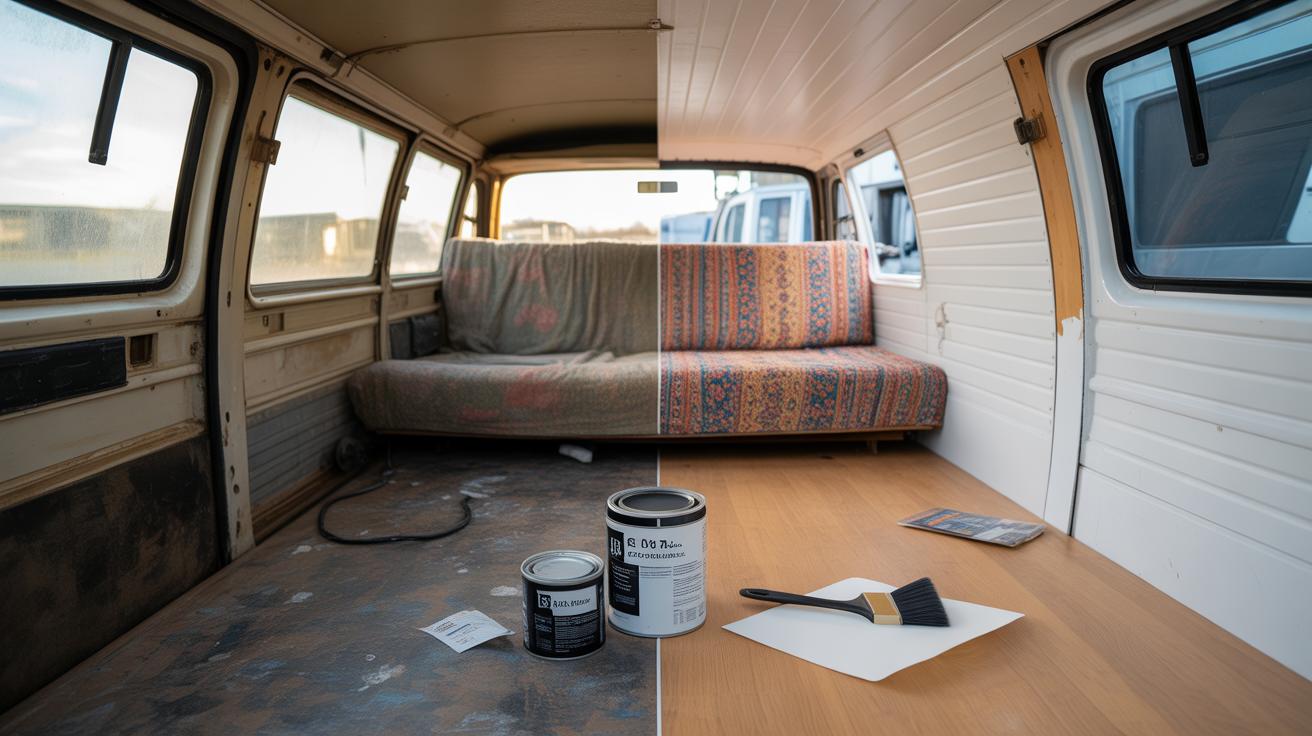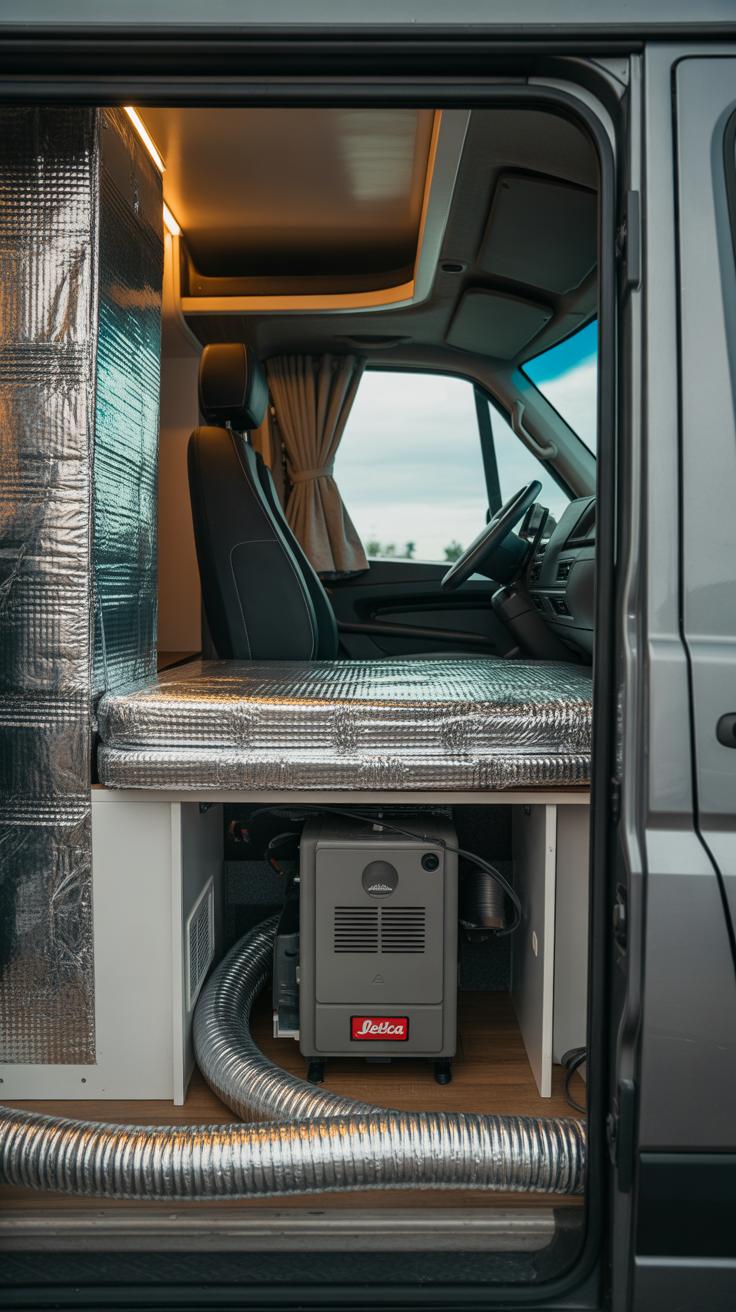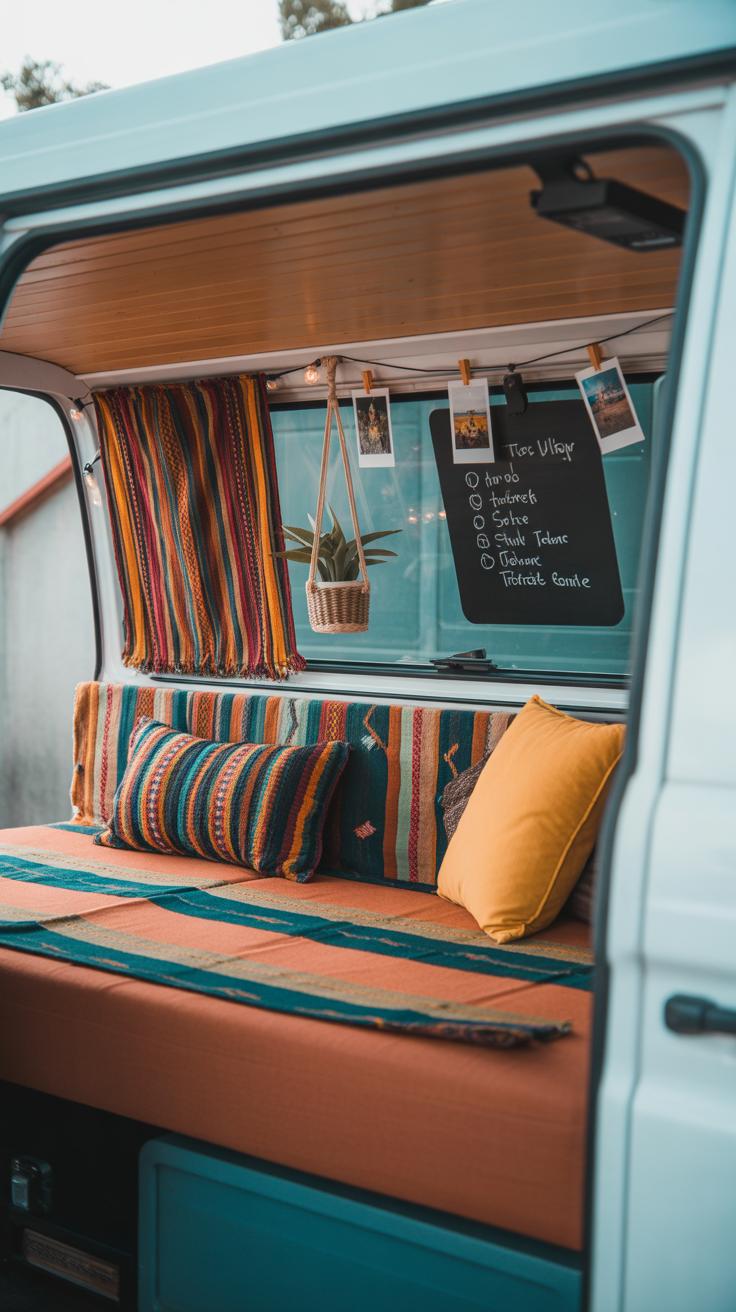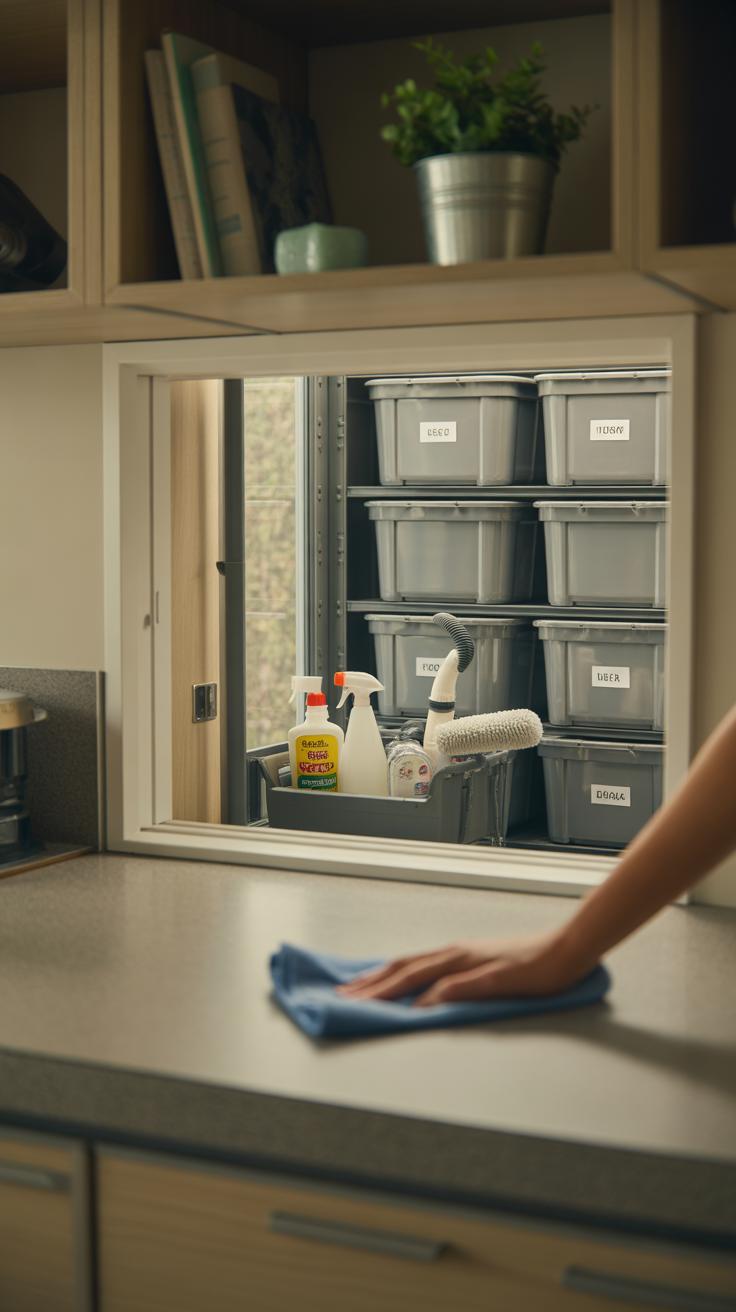Introduction
Traveling in a campervan offers freedom and adventure on the road. Your campervan interior plays a big role in how comfortable and enjoyable your trips will be. Transforming your campervan into a cozy and useful retreat can make your travel experiences better.
This article explores easy and practical ways to update your campervan interior. From smart storage ideas to creating a sleeping area and adding functional kitchen space, you will find advice to help you create a small home on wheels that fits your needs.
Understanding Campervan Basics
A campervan is basically a van that’s been converted or built to serve as both transport and temporary accommodation. It lets you drive your living space wherever you want—that freedom is part of the appeal. Unlike just a plain van used for hauling goods, a campervan offers a compact home on wheels. You get lots of essentials crammed into a limited area, from places to sleep and cook to small storage nooks.
What sets campervans apart is this dual purpose: they’re vehicles first, homes second. You can park them anywhere allowed, and when you do, it transforms into a cozy spot to rest. Many campervans are designed to be self-contained for short stays, though size and features can vary a lot depending on your needs and budget.
What Makes a Campervan Different
Motorhomes and campervans often get lumped together, but they’re not the same. Campervans are generally smaller and built on a van chassis, so they’re easier to drive and park. Motorhomes, on the other hand, are bigger and often built on truck frames, offering more living space but less maneuverability.
Regular vans serve one purpose: transport. They lack beds, kitchens, or storage designed for living. Campervans blend transport with living amenities, keeping everything compact and practical—ideal for road trips where you want to sleep and cook in your vehicle, not just change a tire.
Common Campervan Features
Inside a campervan, you typically find a few staple features that balance comfort with space limits. Here’s what’s common:
- A bed or convertible seating that turns into a sleeping area—space is tight, so multi-use furniture is key.
- A small kitchenette with a stove, sink, and sometimes a fridge. Cooking in there might be snug, but it makes longer trips possible.
- Storage solutions everywhere: under seats, overhead cabinets, and clever compartments to hold essentials.
- Basic bathroom facilities in some—usually just a portable toilet or a small shower setup, rarely full bathrooms.
You might wonder how all this fits in sometimes. It depends on the van’s size and how it’s laid out. But knowing the basics helps you think about what you can add or tweak to make your campervan more like a retreat, which is the next step in planning your space.
Planning Your Campervan Layout
When you start planning your campervan’s interior, the first real challenge is figuring out what matters most to you. You’ll want to focus on areas like seating, sleeping, and cooking, but their importance can vary depending on your travel style. Think about how much time you’ll spend sitting versus lying down, or if you prefer cooking more than eating out. Prioritizing these zones helps avoid a jam-packed feel.
Try making a list of your must-haves. For example:
- Comfortable seating for relaxing or working
- A sleeping spot that suits your rest habits
- A cooking area that fits your meal prep needs
Once that’s clear, start sketching. You don’t need fancy software—just paper and pencil work fine. Draw the van’s floor plan roughly to scale (if you want, use graph paper). Play with different arrangements. Can the bed fold away? Will the kitchen cut into living space too much? What about storage spots?
Visualizing it helps you see awkward spaces or wasted corners. You might even try using cutouts or movable pieces to mimic elements and shuffle them. Personally, I found this step key because it revealed how my favorite idea wouldn’t fit when the seating doubled as part of the bed.
Does your layout leave room to move freely, or will it feel claustrophobic? Sometimes less is more—sacrificing a tiny storage nook might open up a better flow. The goal is a balance between comfort and practical use of space. What’s the trade-off worth for you?
Creating a Comfortable Sleeping Area
Choosing the Right Bed
Picking the bed type for your campervan can shape your whole sleeping experience. You might want a fixed bed if you prefer not to fuss with setup every night, but they do take up more space. Fold-out beds can free up room during the day, though sometimes they feel a bit cramped or less sturdy. Convertible beds—like those turning from a bench or table—offer flexibility, but you’ll have to balance comfort with the ease of transforming them. I once tried a fold-out bed that creaked a little too much, so it wasn’t perfect, but it made daytime space feel much bigger. Depending on how much room you need and what you find comfortable, choosing a bed can sometimes feel like a trade-off.
Making Your Sleep Space Cozy
Making the sleep area cozy goes beyond just the mattress. Think about your bedding choices—soft sheets, warm blankets, and pillows that suit your style of sleep can improve rest significantly. Insulation around the bed helps a lot, too. It keeps temperatures more steady and cuts down on outside noise, which is something I underestimated at first. Privacy is another factor—curtains, screens, or even a simple hanging fabric can shield your space from light and wandering eyes. Some people prefer blackout curtains, while others might like mesh for airflow. You’ll have to find what fits you best, but adding these small touches makes your campervan bed feel more like a retreat than just a place to crash.
Maximizing Storage Efficiency
You might be surprised how much space hides in plain sight inside your campervan. Every nook, every crevice can serve a purpose if you look closely enough.
Think about under-bed storage. It’s more than just empty space beneath your mattress. Drawers or slide-out bins work well here—easy to access, and you can keep bulkier items neatly tucked away. I once tried using just boxes, and honestly, it became a bit of a mess, so investing in something with rails or handles makes a noticeable difference.
Overhead shelves can save floor space and keep favorite items within arm’s reach. The trick is to avoid overcrowding so you don’t feel boxed in. Something with a secure lip or even small doors helps keep things from flying around on the road.
Multi-use furniture is a quiet game changer. A bench that opens up for storage, or tables with compartments, means one piece does double duty. I debated whether adding such furniture would clutter my small space but have since found it makes life simpler, not harder.
Keeping items organized also calls for some systems. Try grouping similar things together—kitchen gear in one place, clothes in another. Clear containers or labeled baskets help a lot; you don’t want to be digging through random piles when you’re in a hurry.
One question I often ask myself: is this spot easy to reach when I need what’s inside? If not, it might not be the right place for everyday items. Sometimes, oddly shaped or rarely used things find a better home tucked away.
Finding what works for you takes time. What seems clutter at first glance might just be a rough draft for a smarter setup tomorrow.
Setting Up a Functional Kitchen
Your campervan kitchen needs to be compact but practical. Think about installing a small stove—two burners usually do the job. It doesn’t have to be fancy; a simple propane or electric model works well, depending on your power setup. A tiny fridge is essential if you want fresh food, but consider how much power it draws and your battery capacity. A sink is often overlooked, but having at least a small basin with a water pump for washing up makes a big difference. You can find compact combo units that save space.
When it comes to storage for utensils and cookware, vertical space can be your friend. Hanging racks or magnetic strips for knives free up drawer space. Drawers and cabinets need to have secure latches so nothing rattles or falls while driving. I once tried a deep drawer that slid open unexpectedly, spilling contents everywhere—not fun. So, think about functionality before fancy features.
Cooking in such a tight space means planning meals that don’t require too many pots or steps. One-pot dishes or meals prepped mostly outside the van can save time and reduce mess. Keeping a cutting board that fits over the sink can double your counter space. Also, clean as you go; clutter builds up fast and makes cooking stressful.
Improving Lighting and Ventilation
Lighting Choices
Lighting in a campervan isn’t just about seeing—it shapes how you feel inside that small space. You want brightness but also coziness, something adjustable. LED strips are popular—they take up little room, use very little power, and can be installed under shelves or around the ceiling edges for gentle illumination. I’ve found that they work well for both daytime shadowing and late-night reading.
Battery-powered lights offer flexibility if you avoid wiring or power draws. They’re useful for areas where running cables is tricky—think closets or nooks. But they might dim quickly depending on the battery, so keep some extras handy.
Don’t forget natural light. Skylights or well-placed windows can flood the campervan with sunlight, making the interior feel larger and less claustrophobic. Yet, sometimes, too much sun causes glare, or it heats up the space, which you might want to control with curtains or shades.
Ventilation Solutions
Fresh air movement is critical. Campervans trap heat and odors quickly, especially after cooking or sleeping. Windows that open are the simplest fix. Sliding or pop-out styles let you let in breezes without risking security or letting rain inside.
Roof vents are another option. Some have manual flaps; others come with electric fans that can run quietly and pull out stale air. I remember one trip when the fan made all the difference—it was stuffy outside, but inside the van, the air felt almost like being outdoors.
When it’s humid or packed inside, a small 12V fan placed near a window or vent can help circulate air well. Still, too much airflow might create drafts or noise, so balancing airflow with comfort matters.
You might wonder, how much ventilation do you really need? It depends on your climate, cooking habits, and how many people share the space. Experiment a bit—the right combo helps keep the campervan inviting rather than just functional or, frankly, muggy.
Adding Comfort with Insulation and Heating
Making your campervan warm and quiet often starts with good insulation. There are a few simple materials that work nicely in such a small space. Reflective foam boards are popular—they’re thin, easy to cut, and can fit into wall cavities or under floors. They also help keep noise out, which is a bonus when you want some peace after a day on the road.
Another choice is sheep wool insulation. It’s natural and breathes well, reducing moisture build-up, which might be a problem in tight spaces. It’s not as straightforward to install as foam, but it’s worth considering if you prefer natural, sustainable materials.
Now, for heating—tiny spaces can get surprisingly cold, especially at night. Small propane heaters designed for camping are common, but you must check for proper ventilation. There’s also diesel-powered heaters, which tap into your van’s fuel system. They might be a bit more complex to install, but can run quietly and efficiently.
Electric heaters are an option if you usually camp where power hookups are available, but they draw a lot of energy and might not suit off-grid adventures. Thinking about your typical camping conditions helps you pick the right one.
Personalizing Your Campervan Interior
Making your campervan feel like home is more than just comfort—it’s about adding those personal touches that tell your story. You could start with color. Curtains, cushions, and small décor items can bring life to the space without taking up room. Choosing fabrics that are easy to wash or that can block light helps too. I remember adding curtains made from lightweight cotton; they made the van feel cozier without weighing everything down.
Decorations need not be just for show. Practical items like storage jars with handwritten labels add character while keeping things organized. Custom artwork or photos clipped to a string can bring familiar sights inside, but without cluttering surfaces. Think about what matters most to you—maps, postcards, or even a small collection of mementos.
Maybe you like it neat, or maybe you thrive in a bit of controlled chaos. Either way, your personal style can reflect in how you arrange everything. What small change could make your van feel less like a vehicle and more like a retreat? It doesn’t have to be perfect, just genuinely yours.
Maintaining Your Campervan Interior
Keeping your campervan’s interior in good shape is a bit like caring for any small living space—there’s no magic shortcut, just regular attention. Daily habits can make a big difference. For example, wiping down surfaces after meal prep or quickly vacuuming crumbs helps prevent buildup that’s harder to clean later. I’ve found that spending just five minutes each evening tidying clutter saves a lot of hassle down the road.
On a weekly basis, take a more detailed pass—clean windows, wash cushion covers if you can, and sweep or mop the floor thoroughly. If you have a composting toilet or sink, paying close attention to those areas keeps odors from becoming a problem that’s tougher to reverse.
Checking for damage is something you might forget until a small issue grows. Have a quick look at joints, cabinet doors, and any upholstery. A loose hinge now—if caught early—means a simple tighten instead of a replacement later. Planning upgrades while you maintain can feel overwhelming. Still, perhaps sketch out what you’d improve next, be it better lighting, new storage, or a fresh coat of paint.
One thing I keep reminding myself: maintenance isn’t a one-and-done task. It’s ongoing and, honestly, a little unpredictable. Some weeks you’ll be on top of it; others, not so much. But that’s part of owning a campervan—you adapt, you fix, sometimes you live with the quirks longer than planned. Does that sound familiar?
Conclusions
Updating your campervan interior can change your travel life. With careful planning and some creativity, you can add comfort and convenience without a big cost. Think about what you need most, like a good bed, storage, and kitchen setup. Focus on simple upgrades that make your space more liveable.
Whether you start a full conversion or make small changes, your campervan can become a welcoming retreat. Enjoy your trips with a campervan that feels like your own comfortable space to rest and recharge.

